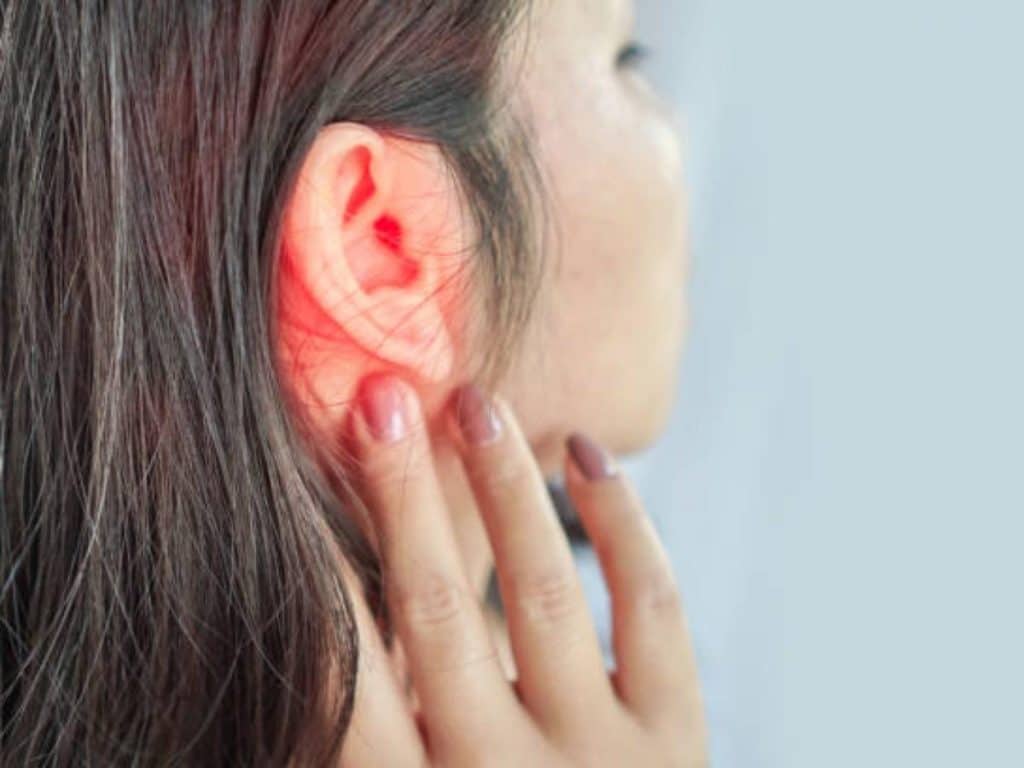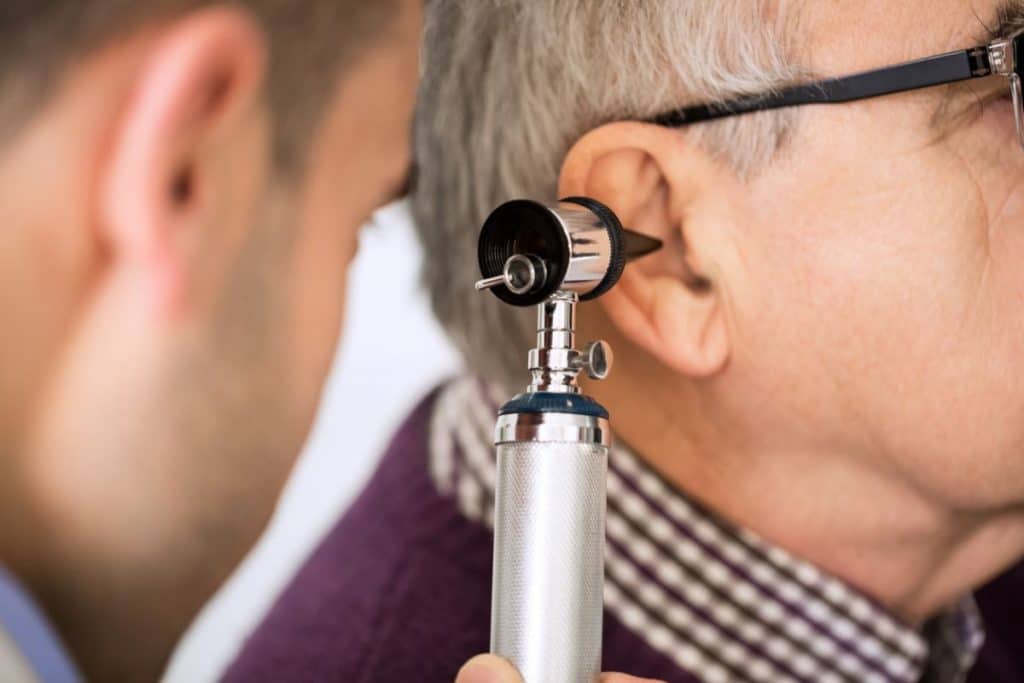Mass Eye and Ear researchers have restored hearing in preclinical mouse models with a specific form of hereditary deafness called DFNA50 caused by mutations in microRNA, using a novel in vivo CRISPR genome editing approach. Because mouse and human microRNAs have identical sequences, the researchers hope this work could one day be translated into human applications.
Genetic deafness is caused by mutations in microRNA
The study also examined the safety of the AAV-mediated genome editing approach and found that it has a good safety profile for the treatment of deafness with little off-target effects and no detectable long-term integration of the AAV vector into the genome.
“Our research in deafness revealed minimal potential risk and supports the feasibility of future clinical applications in humans,” said Wenliang Zhu, Ph.D., and physician-scientist Wan Du, MD, Ph.D., members of Chen’s lab at Mass Eye and Ear and first authors of the paper.
The deafness study, led by Zheng-Yi Chen, DPhil, a research associate at Eaton-Peabody Laboratories at Mass Eye and Ear, was published on Science Translational Medicine .
“Our findings offer a promising path for developing gene-editing treatments for many forms of genetic deafness,” said Chen, who holds the Ines and Fredrick Yeatts Chair in Otolaryngology at Mass Eye and Ear and is an associate professor of otolaryngology and head and neck surgery at Harvard Medical School.
“With further study, our genome editing-based intervention could potentially halt or reverse the progression of deafness in affected individuals, including adults.”
Approximately one in 500 newborns has genetic deafness, and there is currently no approved therapy to cure deafness.

In the new study, the researchers targeted a specific mutation in the microRNA-96 (MiR-96) gene that causes deafness in mice and plays a crucial role in regulating gene expression in mammalian hair cells (sensory cells responsible for hearing).
In humans, this mutation has been identified as the cause of a form of dominantly inherited deafness called DFNA50. Researchers created a mouse model carrying the mutation that mirrored deafness in humans with DFNA50; by four weeks of age, these models showed complete loss of high-frequency hearing.
The team used a CRISPR/Cas9 genome editing approach to target and disrupt this mutation, which was delivered to the inner ear via an injection of an adeno-associated virus (AAV) carrying the editing machinery. They compared injections at two time points, during early development and adulthood, and demonstrated robust preservation of hearing function in both cases over the long term, with early intervention proving to be the most optimal.
The study also examined the safety of the AAV-mediated genome editing approach and found that it had a good safety profile, including little off-target effect and no detectable long-term integration of the AAV vector into the genome. This suggested minimal potential risk and supports the feasibility of future clinical applications in humans.
Chen and his team have designed a construct that contains all known microRNA mutations for use in humans, and in collaboration with the Gene and Cell Therapy Institute at Massachusetts General Brigham, they plan to conduct IND-enabling studies in additional preclinical models in the hopes of translating this therapeutic approach into a first-in-human clinical trial.

Studies like this show the promise of gene therapy for treating conditions like hearing loss. Mass General Brigham’s Gene and Cell Therapy Institute is helping translate researchers’ scientific discoveries into first-in-human clinical trials and, ultimately, life-changing treatments for patients.
This latest research by Chen and colleagues marks a major advance in the field of gene therapy for hearing disorders, offering hope for future clinical trials aimed at restoring hearing function in people with genetic forms of hearing loss.
Chen and his collaborators have also conducted clinical trials examining a different gene therapy approach for another form of deafness, DFNB9, caused by mutations in the OTOF gene. That clinical trial in China showed positive results in children treated in one ear and in both ears.
Chen hopes that the technology developed in the OTOF trial, such as the minimally invasive introduction of AAV into the human inner ear, will accelerate the development of editing therapy in the clinical setting.
“With more than 150 forms of genetic deafness, our research offers further hope to patients who previously had no options other than cochlear implants,” said Chen.
“These findings suggest the need for more rigorous studies based on proof-of-concept papers like these to achieve our goal of developing different therapeutic approaches to target each of these mutations.”
Gene therapy trial restores hearing in both ears of children with congenital deafness
A new gene therapy designed to target a form of inherited deafness has restored hearing function in five children who were treated in both ears. The children also experienced improved speech perception and gained the ability to localize and determine the location of sound.
The study, the first clinical trial in the world to administer gene therapy to both ears (bilaterally), demonstrates benefits that add to those seen in the first phase of this trial, published earlier this year, when children were treated in only one ear.
The research was conducted by researchers from the Mass Eye and Ear and Eye & ENT Hospital of Fudan University in Shanghai and the results were published in Nature Medicine.
“The results of these studies are astonishing,” said study co-senior author Zheng-Yi Chen, DPhil, an associate scientist at Eaton-Peabody Laboratories at Mass Eye and Ear. “We continue to see the hearing of treated children progress significantly, and the new study shows additional benefits of the gene therapy when administered to both ears, including improved sound source localization and improvements in speech recognition in noisy environments.”

The researchers emphasized that their team’s goal has always been to treat children in both ears so that they can hear sounds in three dimensions, an important skill for communication and common daily activities like driving.
“Restoring hearing in both ears in children who are deaf from birth can maximize the benefits of hearing restoration,” said lead study author Yilai Shu, MD, Ph.D., professor, director of the Genetic Hearing Loss Diagnosis and Treatment Center affiliated with Fudan University Hospital of Eye and Ear, Nose and Throat, Shanghai. “These new results demonstrate that this approach holds great promise and warrants larger international trials.”
More than 430 million people worldwide have disabling hearing loss, of which approximately 26 million are congenitally deaf. Up to 60% of childhood deafness is caused by genetic factors. Children with DFNB9 are born with mutations in the OTOF gene that prevent the production of a functional protein otoferlin, which is necessary for the auditory and neural mechanisms underlying hearing.
This new study is the first clinical trial to use bilateral ear gene therapy to treat DFNB9. The new research presents an interim analysis of a single-arm trial of five children with DFNB9 who were followed for 13 or 26 weeks at Fudan University Eye & ENT Hospital in Shanghai, China.
Shu injected working copies of the human OTOF transgene carried by adeno-associated virus (AAV) into patients’ inner ears through a specialized, minimally invasive surgery.

The first case of bilateral treatment was conducted in July 2023. During follow-up, 36 adverse events were observed, but no dose-limiting or serious toxic events occurred. All five children showed recovery of hearing in both ears, with significant improvements in speech perception and sound localization.
Two of the children acquired the ability to appreciate music, a more complex auditory signal, and were observed dancing to music in videos captured for the study. The trial is ongoing and participants continue to be monitored.
In 2022, this research team provided the world’s first gene therapy for DFNB9 as part of a six-patient trial in China treated in one ear. The trial, the results of which were published in The Lancet in January 2024, showed that five out of six children achieved improvements in hearing and speech.
Shu initially presented the data at the 30th Annual Congress of the European Society for Gene and Cell Therapy (ESGCT) in Brussels, Belgium, in October 2023, becoming the first in the world to report clinical data on the use of gene therapy to restore hearing.
“These results confirm the efficacy of the treatment we discussed earlier and represent an important step in gene therapy for genetic hearing loss,” Shu said. Shu trained with Chen for four years as a postdoctoral fellow at Mass Eye and Ear, with their collaboration continuing for more than a decade since he returned to Shanghai.
“Our study strongly supports treating children with DFNB9 in both ears, and our hope is that this trial can be expanded and this approach can be considered for hearing loss caused by other genes or nongenetic causes,” added Chen, who is also an associate professor of otolaryngology and head and neck surgery at Harvard Medical School. “Our ultimate goal is to help people regain their hearing, regardless of how their hearing loss was caused.”

There are currently no drugs that can cure hereditary deafness, which has left room for new interventions such as gene therapies.
Mass General Brigham’s Gene and Cell Therapy Institute is helping translate researchers’ scientific discoveries into first-in-human clinical trials.
Chen and his colleagues are working with the institute to develop platforms and vectors with good manufacturing practice standards that would allow his team to more easily test this therapeutic approach with other genes in the future.
The authors note that further studies are needed to further study and refine the therapy. The bilateral study requires more attention than the unilateral (one ear) study, as operations on both ears double the surgical time. Additionally, by injecting double doses of AAV into the body, the immune response is likely to be stronger and the potential for adverse effects may be greater.
Looking ahead, more patients and longer follow-up will be needed, and continued testing of gene therapies and cochlear implants in larger, randomized trials will be valuable.
#Genetic #Deafness #Preclinical #Genome #Editing #Treatment #Restores #Hearing